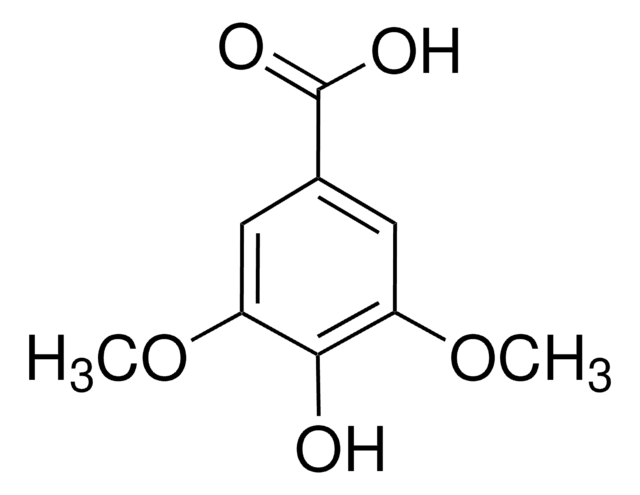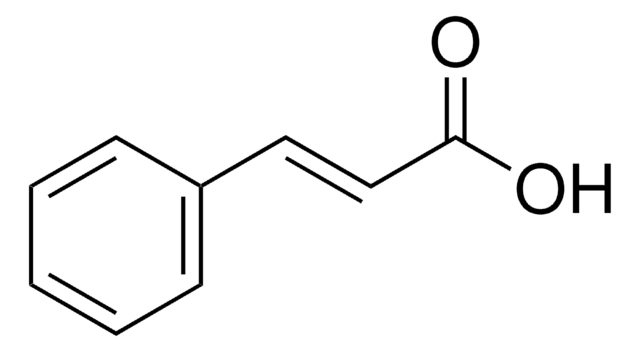Kluczowe dokumenty
93878
trans-Sinapic acid
analytical standard
Synonim(y):
trans-4-Hydroxy-3,5-dimethoxy-cinnamic acid, trans-Sinapinic acid
About This Item
Polecane produkty
klasa czystości
analytical standard
Poziom jakości
Próba
≥99.0% (HPLC)
okres trwałości
limited shelf life, expiry date on the label
metody
HPLC: suitable
gas chromatography (GC): suitable
mp
195-205 °C (dec.)
Zastosowanie
food and beverages
Format
neat
ciąg SMILES
COc1cc(\C=C\C(O)=O)cc(OC)c1O
InChI
1S/C11H12O5/c1-15-8-5-7(3-4-10(12)13)6-9(16-2)11(8)14/h3-6,14H,1-2H3,(H,12,13)/b4-3+
Klucz InChI
PCMORTLOPMLEFB-ONEGZZNKSA-N
Szukasz podobnych produktów? Odwiedź Przewodnik dotyczący porównywania produktów
Powiązane kategorie
Zastosowanie
Opakowanie
Inne uwagi
Polecane produkty
Hasło ostrzegawcze
Warning
Zwroty wskazujące rodzaj zagrożenia
Zwroty wskazujące środki ostrożności
Klasyfikacja zagrożeń
Eye Irrit. 2 - Skin Irrit. 2 - STOT SE 3
Organy docelowe
Respiratory system
Kod klasy składowania
11 - Combustible Solids
Klasa zagrożenia wodnego (WGK)
WGK 3
Temperatura zapłonu (°F)
Not applicable
Temperatura zapłonu (°C)
Not applicable
Wybierz jedną z najnowszych wersji:
Certyfikaty analizy (CoA)
Nie widzisz odpowiedniej wersji?
Jeśli potrzebujesz konkretnej wersji, możesz wyszukać konkretny certyfikat według numeru partii lub serii.
Masz już ten produkt?
Dokumenty związane z niedawno zakupionymi produktami zostały zamieszczone w Bibliotece dokumentów.
Klienci oglądali również te produkty
Nasz zespół naukowców ma doświadczenie we wszystkich obszarach badań, w tym w naukach przyrodniczych, materiałoznawstwie, syntezie chemicznej, chromatografii, analityce i wielu innych dziedzinach.
Skontaktuj się z zespołem ds. pomocy technicznej










